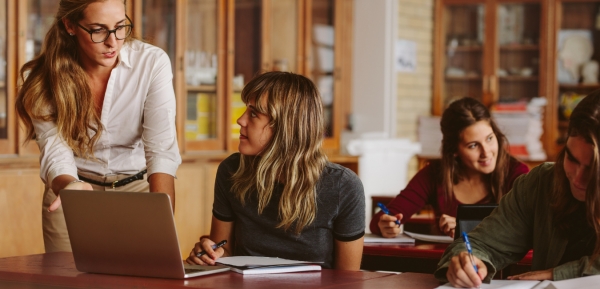In the midst of a pandemic, staff needs for professional development are different. Here are some ideas for delivering PD that’s on the mark.
This year has required a delicate balance of direct and indirect support, with many school leaders asking themselves, “How much professional development is too much?” and “How do I know what people need and deliver it meaningfully?”
Amid shifting learning models, boiling levels of burnout, and constant unknowns, I’ve landed on the following strategies for professional development that help me and my team stay focused.
ASK YOUR SOURCES
As educators, we lean into elevating student voice and choice in their learning. The same approach can be applied to our own professional development. Prior to returning to school in August 2020, my school offered multiple listening sessions for staff and asked three questions:
What questions do you have about the hybrid/distance learning format?
What tools/tech do you need to be successful?
What support would be helpful in the coming months?
In response to the answers we received, we realized that the professional development we had done before the pandemic would no longer work. This year, we incorporated PD playlists (an adaptation of playlists for students) so that teachers could differentiate their own learning by picking activities that would enhance their classroom practices.
To help with social distances and learning in person and remotely, we used a flipped schedule in which introductory videos were front-loaded a week ahead. To give teachers time to experiment with technology tools as if they were students, we offered meetings using some of these tools, such as Nearpod. But we also made sure there was unscheduled time during professional development events so that teachers could play with new tech tools or explore new classroom strategies.
Asking our teachers what they really needed to be successful during the year and then tailoring the professional development to their needs changed the dynamic of our professional development dramatically: We went from throwing darts at the wall, hoping one of them would stick, to precision throws aimed right at a target.

SAVE RESOURCES TO SAVE SANITY
There is a ton of professional development information coming at teachers every day, and given the volume of information they receive, it can be hard to remember when it came, where it came from, or who sent it. In a year of moving among in-person, hybrid, and remote settings, having a single hub for resources and support for teachers, such as professional development presentations and tips for using certain tools, is essential to minimize everyone’s cognitive load. For us, that’s a shared digital notebook (a OneNote notebook).
The digital notebook is a repository where staff throughout the school can share resources with each other; that way, they have a single go-to resource for new instructional approaches that is housed with other professional development materials. Staff can search tabs by committee, pages for dates of meetings, or keywords to locate resources.
To help teachers find specific resources, the school’s instructional coaches offer weekly synchronous office hours on our distance learning day for teachers to log in and ask questions. All questions asked are important and relevant, so they are also stored in the digital notebook.
Through the meetings during office hours, we have learned all sorts of things, such as the fact that an email we thought was crystal clear was actually quite muddy. By having checkpoints with coaches, teachers can ask the questions we didn’t see coming and help us to clearly communicate changes in ways that everyone hears and understands.
Also, every week, we publish a newsletter with not just professional development resources but tech tips and sanity savers for staff, plus answers to reflection questions we posed via Padlet, Flipgrid, Google Surveys, and Twitter.
THE IMPORTANCE OF FUN
Community among the school staff is more essential this year, and nothing builds community like fun, so during our professional development time, our middle school staff played. With masks on, social distancing, and time throughout the day, teachers could sign up for short sessions to complete a total of 90 minutes of play-based professional development. We found that learning, even in a professional development context, doesn’t exclude laughter.
We played heated variations of games like rock-paper-scissors and completed a 10-minute yoga session guided by an online instructor. Staff played at workstations around the building, including one that addressed the importance of brain breaks so that we could better lead students through brain breaks in the classroom. We also took sensory-based breaks with Play-Doh, dice, and other manipulatives found around the school. We even incorporated a March Madness basketball shooting contest that brought together the accomplished basketball players on our staff with the novices.
INCLUDE ELEMENTS OF SELF-CARE
There is no perfection in a pandemic, and solutions are not found in silos. Over and over again, I’ve seen it in myself and in others: The moment you want to retreat is the moment you need to stand up and ask for help.
While much of our professional development has had a focus on student social and emotional learning, our counselors made sure to incorporate staff SEL into every session. From 5-minute activities for staff brain breaks to reviewing signs of secondary trauma in teachers, incorporating staff wellness as part of professional development isn’t just nice—it’s necessary.
Revisiting professional development this year came out of necessity. It’s clear now, after these adjustments, that our professional development is now more relevant, timely, and meaningful for everyone.
By Jessica Cabeen








